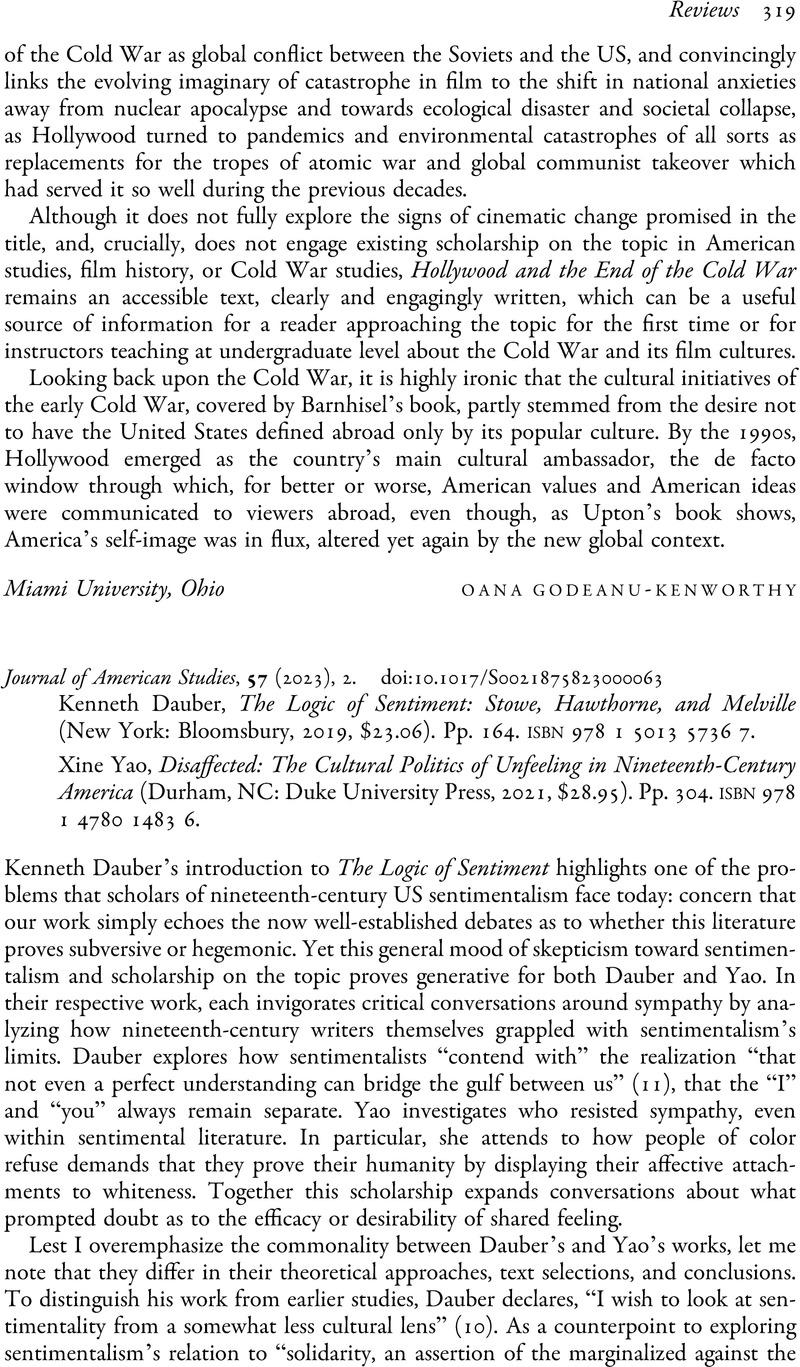No CrossRef data available.
Article contents
Kenneth Dauber, The Logic of Sentiment: Stowe, Hawthorne, and Melville (New York: Bloomsbury, 2019, $23.06). Pp. 164. isbn 978 1 5013 5736 7. - Xine Yao, Disaffected: The Cultural Politics of Unfeeling in Nineteenth-Century America (Durham, NC: Duke University Press, 2021, $28.95). Pp. 304. isbn 978 1 4780 1483 6.
Review products
Kenneth Dauber, The Logic of Sentiment: Stowe, Hawthorne, and Melville (New York: Bloomsbury, 2019, $23.06). Pp. 164. isbn 978 1 5013 5736 7.
Xine Yao, Disaffected: The Cultural Politics of Unfeeling in Nineteenth-Century America (Durham, NC: Duke University Press, 2021, $28.95). Pp. 304. isbn 978 1 4780 1483 6.
Published online by Cambridge University Press: 19 April 2023
Abstract
An abstract is not available for this content so a preview has been provided. Please use the Get access link above for information on how to access this content.

Information
- Type
- Review
- Information
- Journal of American Studies , Volume 57 , Special Issue 2: Food, Health and Welfare in the Long Twentieth Century , May 2023 , pp. 319 - 323
- Copyright
- Copyright © The Author(s), 2023. Published by Cambridge University Press in association with the British Association for American Studies


